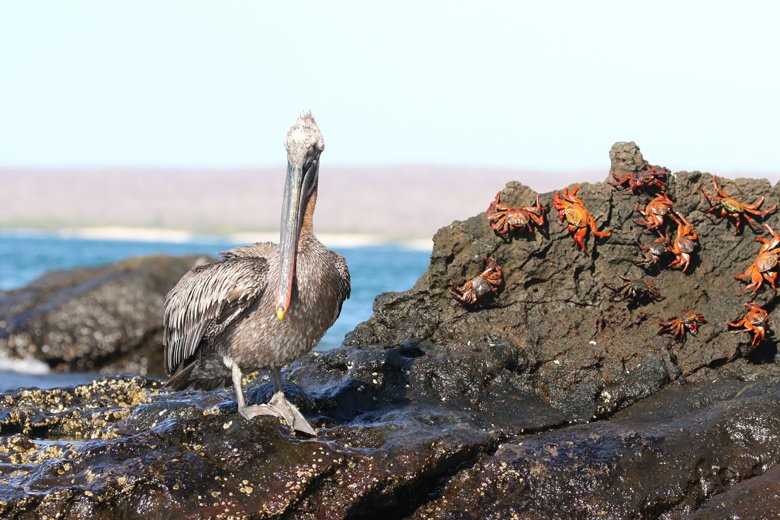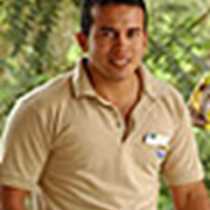It was time to learn about the human history of the Galapagos, and it could not have chosen a better island for this than Floreana. We woke up to a calm bay and beautiful weather, and our first stop today was Cormorant Point, one of the visitor sites of Floreana. Several species of birds can be seen here, in fact, this is one of the few places where one can spot greater flamingoes. The temperature was quite lovely as we visited a white sandy beach where evidence of nesting by Pacific green turtles were seen near the shoreline.
After breakfast, the National Geographic Endeavour navigated to Champion Island where we chose to go on for Zodiac rides in search for the elusive Floreana mockingbird, which are extinct on the main island due to introduced predators devastating its population over the years. There are about two hundred mockingbirds left on the four satellite islets that surround Floreana, and we hope to use these individuals to repopulate the small breeding grounds off the coast of the main island, and bring the numbers of this endemic bird back to a sustainable amount.
Champion is a great snorkeling site as wellm where a large colony of California sea lions greet the visitors and play with us constantly throughout the outing. Underneath the water, endemic yellow black coral is plentiful, and usually white-tipped reef sharks and spotted eagle rays are seen. The sea lions as usual gave us quite a show, and we were just fascinated by how welcoming they were when we jumped into the cool blue ocean.
After a great snorkeling outing, we went to Post Office Bay, where some of us chose to go kayaking around the coastline of Floreana, where mangroves and a variety of wildlife was spotted. We then visited the Post Office Barrel and left postcards to be delivered for free by visitors—this activity has been going on since the eighteen century without interruption.







